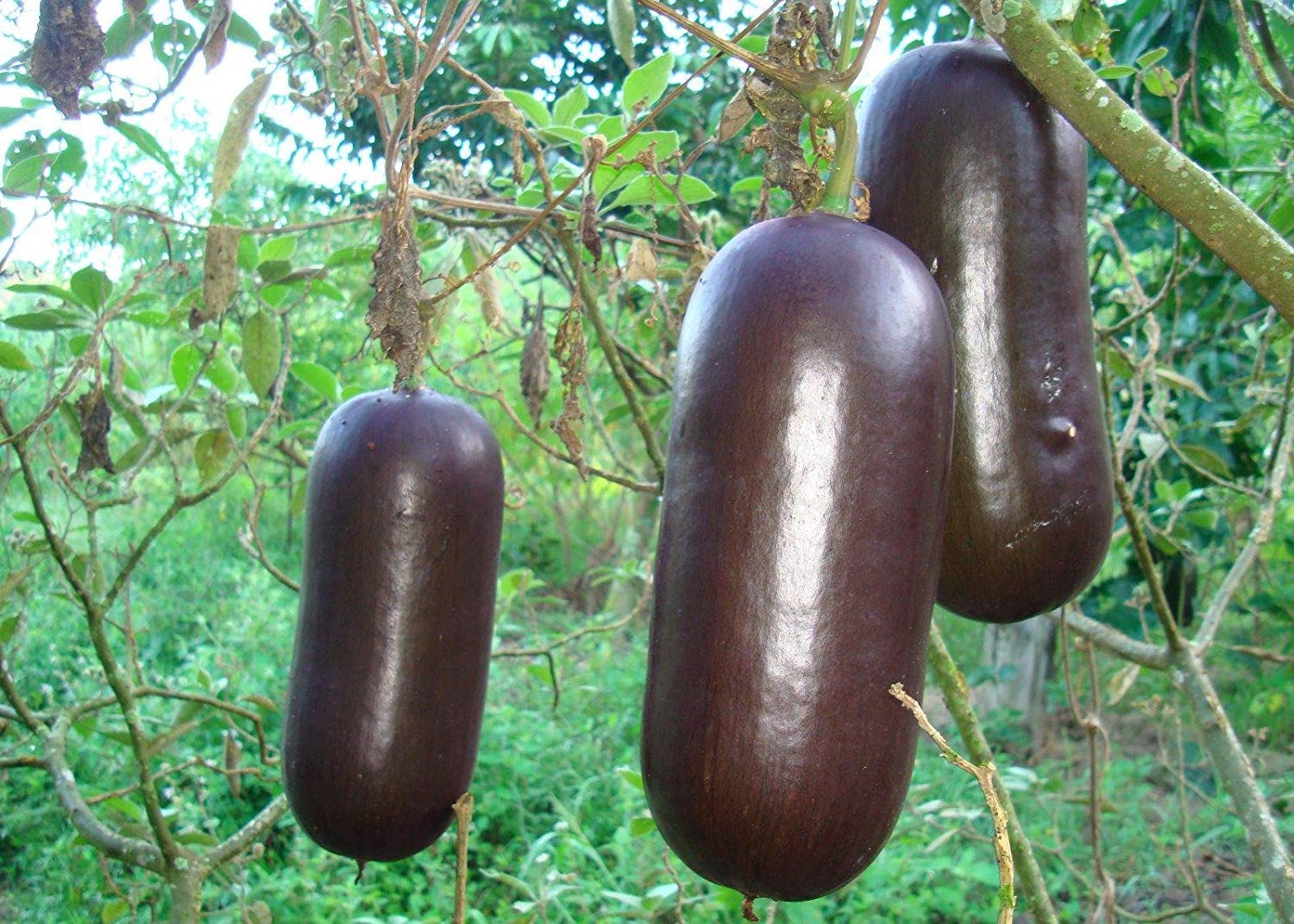
Cassabanana, also known as Sicana odorifera, is a tropical fruit that might not be on your radar yet. This vibrant, elongated fruit boasts a striking orange or red skin and a sweet, aromatic flavor. Originating from South America, cassabanana is not just a treat for the taste buds but also a powerhouse of nutrients. It's packed with vitamins A and C, making it a great addition to a healthy diet. But what makes cassabanana truly special? Its versatility! You can eat it raw, cook it, or even use it as a natural air freshener due to its delightful fragrance. Ready to learn more about this exotic fruit? Let's dive into 15 fascinating facts about cassabanana!
Key Takeaways:
- Cassabanana, a tropical fruit from South America, is not only beautiful but also nutritious. It's rich in vitamins, antioxidants, and low in calories, making it a healthy and delicious snack option.
- From its vibrant appearance to its cultural significance, cassabanana is a versatile fruit with uses in both sweet and savory dishes. It holds traditional and economic value, making it a fascinating and important crop in various regions.
What is Cassabanana?
Cassabanana, also known as Sicana odorifera, is a tropical fruit native to South America. Its vibrant color and unique taste make it a fascinating subject. Here are some intriguing facts about this exotic fruit.
-
Cassabanana's Origin
Cassabanana hails from the tropical regions of South America, particularly Brazil and Peru. Indigenous people have cultivated it for centuries. -
Appearance
The fruit is strikingly beautiful, with a bright orange or red skin. It can grow up to 60 centimeters long, resembling a giant cucumber. -
Aroma
Cassabanana emits a sweet, fragrant aroma, often compared to a mix of melon and pineapple. This scent intensifies as the fruit ripens.
Nutritional Value
Cassabanana is not just pretty; it's packed with nutrients. Let's explore its health benefits.
-
Rich in Vitamins
Cassabanana is loaded with vitamins A and C. These vitamins are essential for maintaining healthy skin and boosting the immune system. -
Antioxidants
The fruit contains antioxidants that help combat free radicals in the body. This can reduce the risk of chronic diseases. -
Low in Calories
Despite its sweet taste, cassabanana is low in calories, making it a healthy snack option.
Culinary Uses
Cassabanana's unique flavor makes it versatile in the kitchen. Here are some ways to enjoy it.
-
Eaten Fresh
The simplest way to enjoy cassabanana is to eat it fresh. Its juicy, sweet flesh is a treat on its own. -
Desserts
Cassabanana can be used in various desserts, such as fruit salads, smoothies, and ice creams. Its natural sweetness enhances these dishes. -
Savory Dishes
In some cultures, cassabanana is used in savory dishes. It can be cooked with meats or added to stews for a unique flavor twist.
Growing Cassabanana
Interested in growing your own cassabanana? Here are some tips to get started.
-
Climate Requirements
Cassabanana thrives in tropical and subtropical climates. It needs plenty of sunlight and warmth to grow. -
Soil Conditions
The plant prefers well-drained, fertile soil. Adding organic matter can improve soil quality and promote healthy growth. -
Propagation
Cassabanana can be propagated from seeds or cuttings. Seeds should be planted in warm soil, while cuttings can be rooted in water before planting.
Cultural Significance
Cassabanana holds cultural importance in various regions. Let's delve into its significance.
-
Traditional Medicine
In some cultures, cassabanana is used in traditional medicine. Its leaves and seeds are believed to have medicinal properties. -
Symbolism
The fruit is sometimes used in rituals and ceremonies. Its vibrant color and sweet aroma symbolize prosperity and abundance. -
Economic Value
Cassabanana is also an important crop for local economies. Farmers sell the fruit in markets, providing a source of income.
Cassabanana: A Hidden Gem
Cassabanana, with its vibrant colors and unique flavor, deserves more attention. This tropical fruit not only adds a splash of color to gardens but also offers nutritional benefits. Rich in vitamins A and C, it supports immune health and vision. Its versatility in culinary uses, from fresh consumption to preserves, makes it a valuable addition to any kitchen.
Growing cassabanana can be a rewarding experience. It thrives in warm climates and requires minimal care once established. Its fragrant flowers attract pollinators, enhancing the biodiversity of your garden.
Incorporating cassabanana into your diet and garden can bring exotic flavors and visual appeal. Whether you're a gardening enthusiast or a food lover, this lesser-known fruit offers something special. Give cassabanana a try and enjoy its unique charm.
Frequently Asked Questions
Was this page helpful?
Our commitment to delivering trustworthy and engaging content is at the heart of what we do. Each fact on our site is contributed by real users like you, bringing a wealth of diverse insights and information. To ensure the highest standards of accuracy and reliability, our dedicated editors meticulously review each submission. This process guarantees that the facts we share are not only fascinating but also credible. Trust in our commitment to quality and authenticity as you explore and learn with us.


